The figure here shows three arrangements of an electron e and two protons p. (a) Rank the arrangement according to the magnitude of the net electrostatic force on the electron due to the protons, largest first. (b) In situation c, is the angle between the net force on the electron and the line labelled d less than or more than 45∘ ?
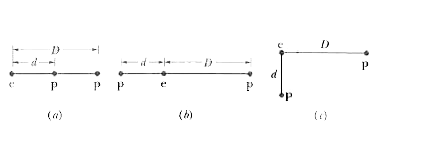
(a) a, c, b, (b) less than
Topper's Solved these Questions
- ELECTRIC CHARGES AND FIELDSBOOK - RESNICK AND HALLIDAYCHAPTER - ELECTRIC CHARGES AND FIELDSEXERCISE - Problems
63 Videos
- ELECTRIC CHARGES AND FIELDSBOOK - RESNICK AND HALLIDAYCHAPTER - ELECTRIC CHARGES AND FIELDSEXERCISE - Practice Questions (Single Correct Choice Type)
45 Videos
- ELECTRIC CHARGES AND FIELDSBOOK - RESNICK AND HALLIDAYCHAPTER - ELECTRIC CHARGES AND FIELDSEXERCISE - Practice Questions (Integer Type )
3 Videos
- ELASTICITYBOOK - RESNICK AND HALLIDAYCHAPTER - ELASTICITYEXERCISE - PRACTICE QUESTIONS (Integer Type)
3 Videos
- ELECTRIC POTENTIALBOOK - RESNICK AND HALLIDAYCHAPTER - ELECTRIC POTENTIALEXERCISE - (PRACTICE QUESTIONS) Integer Type
1 Videos
Similar Questions
Figure shows three arrangements of an electrons e and two protons p(where Dgtd)
(a) Rank the arrangement according to the magnitude of the net electrostatic force on the electron due to the protons placing the largest first.

(b) In situation (c), is the angle between the net force on the electrons and the line labeled horiontal less than or more than 45∘?
View SolutionFigure shows three arrangements of an electrons e and two protons p(where Dgtd)
(a) Rank the arrangement according to the magnitude of the net electrostatic force on the electron due to the protons placing the largest first.

(b) In situation (c), is the angle between the net force on the electrons and the line labeled horiontal less than or more than 45∘?
View Solution
Knowledge Check
The figure shows four arrangement of three particles of equal masses. Rank the arrangement according to the magnitude of the net gravitational force on the particle m, greatest first.
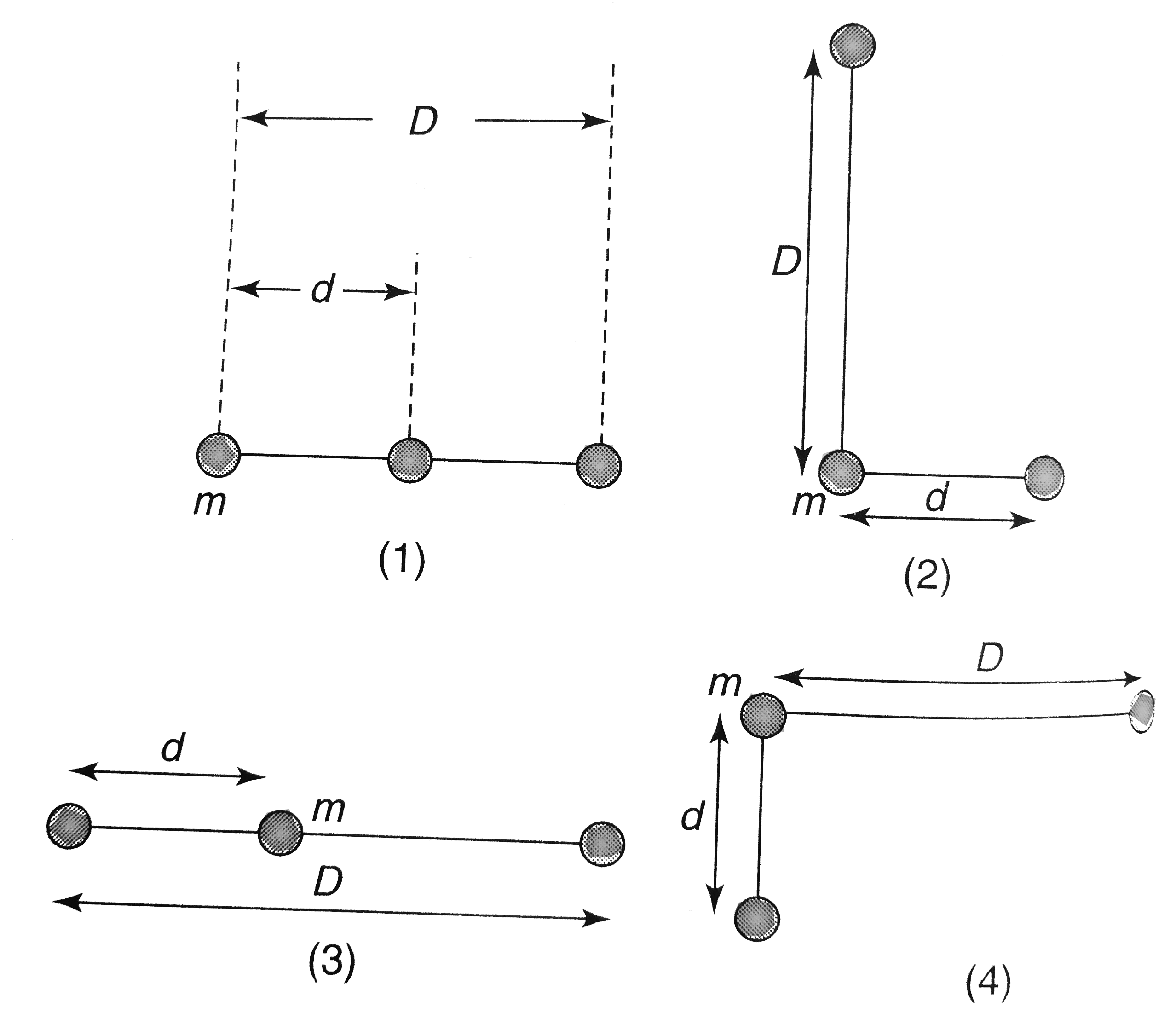 A1, tie of 2 and 4, then 3B1,4,3,2C2,3,4,1D4,3,1,2
A1, tie of 2 and 4, then 3B1,4,3,2C2,3,4,1D4,3,1,2The figure shows four arrangements of three particles of equal masses. (a) Rank the arrangements accroding to the magnitude of the net gravitational force on the particlelabeled m, greatest first. (b) In arrangement 2, is the direaction of the net force closer of the line of length d or to theline of length D ?
A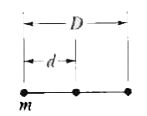 B
B C
C D
D
The figure shows four arrangements of three particles of equal masses. (D = 2d)

Select the correct option regarding the magnitude of the net gravitational force on the particle labelled m.A(i)>(iii)=(iv)>(ii)B(i)=(iii)>(ii)>(iv)C(i)>(ii)>(iii)>(iv)D(iv)<(iii)<(ii)=(i)
Figure 1(a).24 shows two protons (symbol P) and one electron (symbol e) on a straight line AB. What is the direction of net electrostatic force on the central proton?
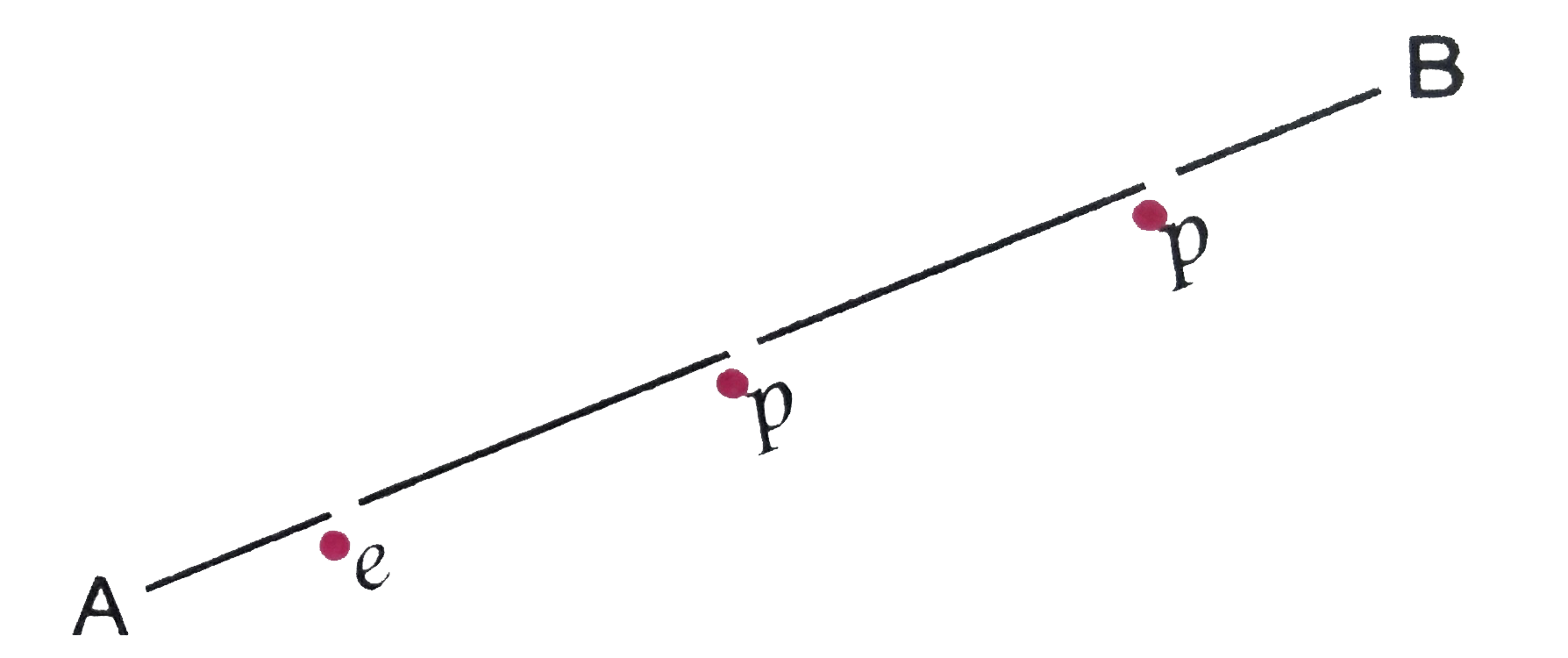
View SolutionThe figure shows two protons (symbol p) and one electron (symbol e) on an axis. On the central proton, what is the direction of (a) the force due to the electron, (b) the force due to the other proton, and (c ) the net force ?

View SolutionThe figure here shows a proton p and an electron e on x axis. What is the direction of the electric field due to the electron at (a) point S and (b) point R ? What is the direction of the net electric field at (c ) point R and (d) point S?
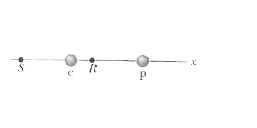
View SolutionIn crystals of the salt cesium, cesium ions Cs+ form the eight corners of a cube and a chlorine ion Cl− is at the cube's center Fig. The edge length of the cube is 0.40 nm. The Cs+ ions are each deficient by one electron (and thus each has a charge of -e), and the Cl− ion has one excess electron (and thus has a charge of -e). (a) What is the magnitude of the net electrostatic force exerted on the Cl− ion by the eight Cs+ ions at the corners of the cube? (b) If one of the Cs+ ions is missing, the crystal is said to have a defect, what is the magnitude of the net electrostatic force exerted on the Cl− ion by the seven remaining Cl+ ions ?
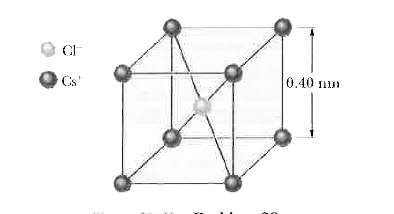
View SolutionFigure (a) shows an arrangement of three charged particles separted by distance d. Particles A and C are fixed on the x-axis, but particle B can be moved along a circle centered on particle A. During the movement, a radial line between A and B makes an angle θ relative to the positive direction of the x-axis (Fig. b). The curves in Fig. c give, for two situations, the magnitude Fnet of the net electrostatic force on particle A due to the other particles. That net force if given as a function of angle θ and as a multiple of a basic amount F0. For example on curve 1, at θ=180∘ we see that Fnet=2F0. (a) For the situation corresponding to curve 1, what is the ratio of the charge of particle C to that of particle B (including sign)? (b) For the situation corresponding to curve 2, what is that ratio?

View Solution
